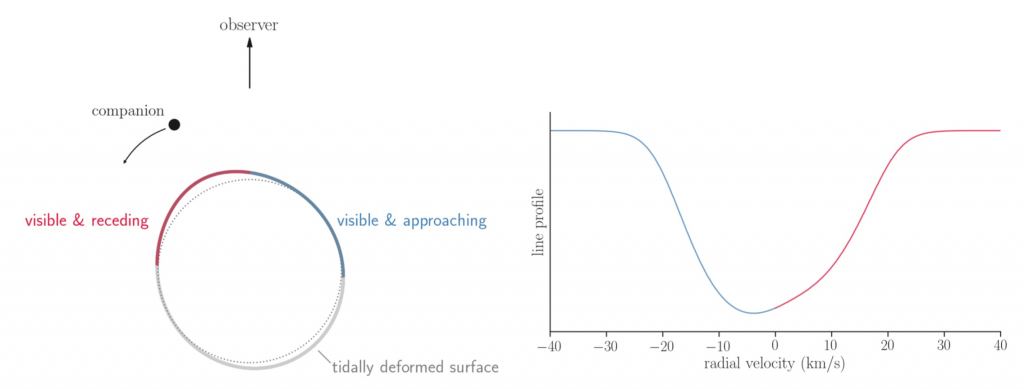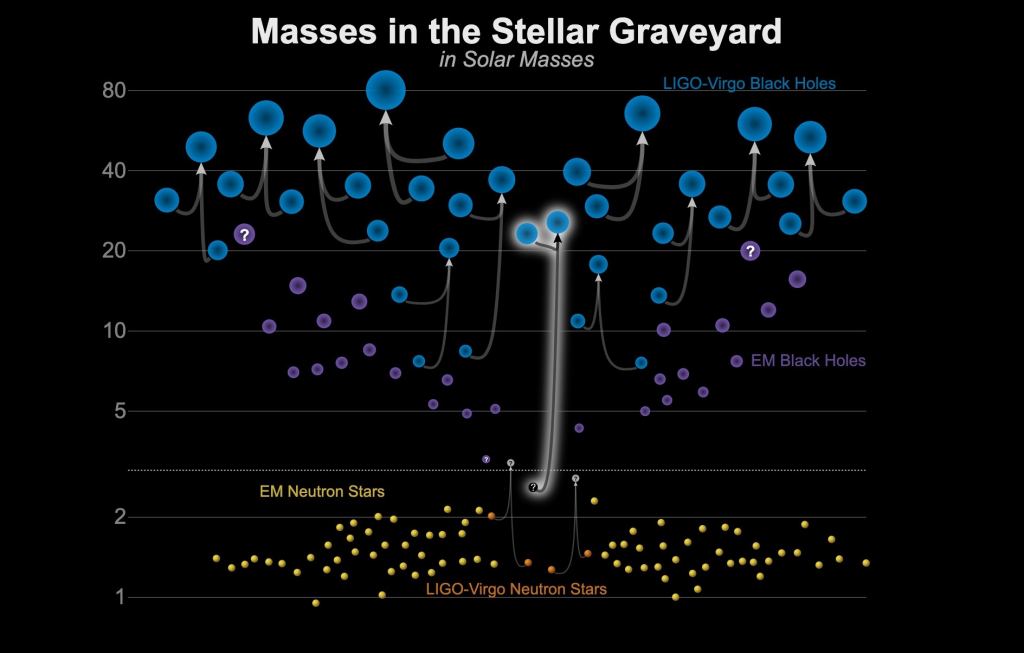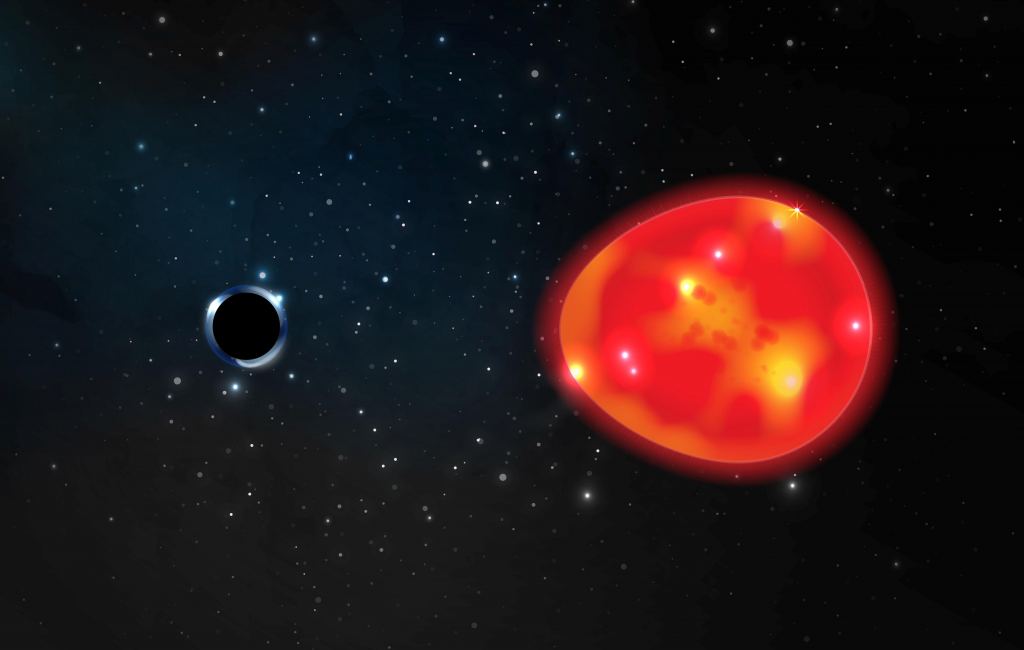Smallest, Closest Black Hole Ever Discovered is Only 1,500 Light-Years Away
By Brian Koberlein
In theory, a black hole is easy to make. Simply take a lump of matter, squeeze it into a sphere with a radius smaller than the Schwarzschild radius, and poof! You have a black hole. In practice, things aren’t so easy. When you squeeze matter, it pushes back, so it takes a star’s worth of weight to squeeze hard enough. Because of this, it’s generally thought that even the smallest black holes must be at least 5 solar masses in size. But a recent study shows the lower bound might be even smaller.
The work focuses red giant star known as V723 Monoceros. This star has a periodic wobble, meaning it’s locked in orbit with a companion object. The companion is too small and dark to see directly, so it must be either a neutron star or black hole. Upon closer inspection, it turns out the star is not just wobbling in orbit with its companion, it’s being gravitationally deformed by its companion, an effect known as tidal disruption.

Both the orbital wobble and the tidal disruption of V723 Mon can Doppler shift the light coming from it. Since both of these effects depend on the mass of the companion, you can calculate the companion mass. It turns out to be about 3 solar masses.
This is odd because it falls into what’s known as the [mass gap](/blog/dark-edge/ mass gap) for compact bodies. According to our understanding of nuclear physics, a neutron star shouldn’t be more than 2.5 solar masses. the largest neutron star we’ve observed is about 2.24 solar masses. Since black holes should be greater than 5 solar masses, there is a gap where don’t expect to see compact bodies. And this object is right in the middle of it.

This isn’t the first time we’ve observed an object in the mass gap. In 2019 LIGO and Virgo detected gravitational waves from a merger between a 23 solar mass and 2.6 solar mass object. While the merger object might have been a large neutron star, this new object seems too large for that. Right now the evidence strongly points to it being a black hole. If that’s true, it is the smallest black hole we’ve discovered.
It would also be the closest black hole we’ve discovered, at only 1,500 light-years away. Astronomers have nicknamed this object The Unicorn, partly because of its unique properties, and partly it is in the constellation Monoceros. While we can’t yet confirm The Unicorn is a black hole, we can with further studies. So, I guess you could call these future studies a Unicorn Chaser.
Reference: Masuda, Kento, and Teruyuki Hirano. “Tidal Effects on the Radial Velocities of V723 Mon: Additional Evidence for a Dark 3 M? Companion.” The Astrophysical Journal Letters 910.2 (2021): L17.
Reference: Jayasinghe, T., et al. “A Unicorn in Monoceros: the 3 M? dark companion to the bright, nearby red giant V723 Mon is a non-interacting, mass-gap black hole candidate.” arXiv preprint arXiv:2101.02212 (2021).
The post Smallest, Closest Black Hole Ever Discovered is Only 1,500 Light-Years Away appeared first on Universe Today.

April 27, 2021 at 11:30PM
via Universe Today read more...

Post a Comment